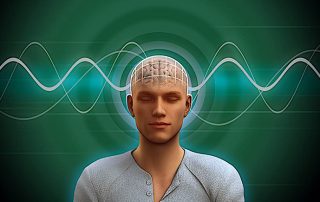
Adam Eason – author of The Science of Self Hypnosis
Your course was eye opening, heartfelt and transforming for me personally and professionally
Dr Ernest Rossi – author with Milton H Erickson of the Collected Papers of Milton H Erickson
Stephen Brooks and the art of Compassionate Ericksonian Hypnotherapy surely sets the highest standard.
Kerin Webb – author of The Language Pattern Bible
You are the leaders in indirect Ericksonian Hypnosis
Bill O’Hanlon – author of Taproots, Solution-Oriented Hypnosis and a Guide To Trance-Land.
Stephen Brooks knows how to do effective Ericksonian Hypnosis and teach others how to do it.
Dan Jones – author of Advanced Ericksonian Hypnotherapy Scripts
Your legendary hypnotherapy courses are the most highly regarded in the field
Ivan Tyrrell – author of How To Master Anxiety
You are very creative with words, you talk to different parts of a patient's mind, it’s so powerful!
Igor Ledochowski – author of The Deep Trance Training Manual
Your training is unique, refined and dynamic, making each person feel an active part of the course
RECENT BLOG POSTS
Hypnosis for Motivation – the Best Techniques
Every therapist faces the problem of having clients with low motivation. Yet, therapists are rarely taught how to specifically motivate clients to achieve outcomes. Most training is based on using therapy techniques to overcome problems, however, if the client is unmotivated to get better then therapy techniques are not as effective. One approach to motivating clients comes from the work of Milton Erickson. His Ericksonian hypnosis approach to motivation is based on the concept of tasking clients. Tasking involves giving homework or behavioural challenges and tasks for the client to carry out between therapy sessions. These tasks are often given while the client is in hypnosis as the trance state acts as a kind of glue or adhesive to make the suggestions given by the therapist more likely to be taken on at the unconscious level. So here we see hypnosis being used to motivate clients to carry out tasks which then, in themselves, increase motivation to succeed at therapy. Tasks work by creating a change in the Patient’s routine which bring about a change in the Patient’s behaviour and therefore a change in the way the problem functions. Tasks are given to interrupt habitual patterns of behaviour or thinking.
The Secret of Hypnosis
An Article about how techniques for inducing hypnosis have changed over the years - from the Independent Newspaper, England by John McCrone. Hypnosis can be explained as a form of self-induced sensory deprivation…well perhaps. Hypnotists with swinging fob watches are out. Far more effective ways of putting people into a trance have been discovered which, with their employment of confusion and word twisting, are not too far removed from brainwashing techniques. Yet while the practice of hypnosis has made considerable strides of late, science is still uncertain whether the phenomenon even exists. Hypnotism has been studied for over 200 years. For a long time, the only way known of putting subjects into a trance was to get them to focus on a spot on the ceiling or a monotonous pendulum while the hypnotist commanded them to fall asleep. However, this "authoritarian" method has since widely been replaced among hypnotherapists by an indirect technique pioneered by the US therapist, Milton Erickson. Today, a hypnotist uses a careful manipulation of the conversation they have with their clients to "lead" them into a trance state. As Stephen Brooks, director of the training group, British Hypnosis Research, explains it, there is none of
Become an Expert on non verbal communication
When a Patient attempts to give you information he is likely to have thought out very carefully what he wants to say prior to the session. Usually this is based on what he thinks you want to hear. When you meet your Patient there will be certain things that you will want to hear also, however these may not be the same things that the Patient thinks you want to hear. This means that a certain amount of the Patient's information will be contrived. Patients seek help from a therapist because they feel that they cannot help themselves. Yet when they ask for help they have to use the same vocabulary and concepts to describe their problems that have previously not been helpful in solving their problems. This puts Patients at a disadvantage because they can only talk about their problems from their own limited frames of reference. This blog post will teach you how to observe and understand non-verbal communication so that it naturally becomes part of your everyday way of seeing how people interact. It will help you understand someone's motives, beliefs and thoughts as it will allow you to compare what a person is saying verbally with




